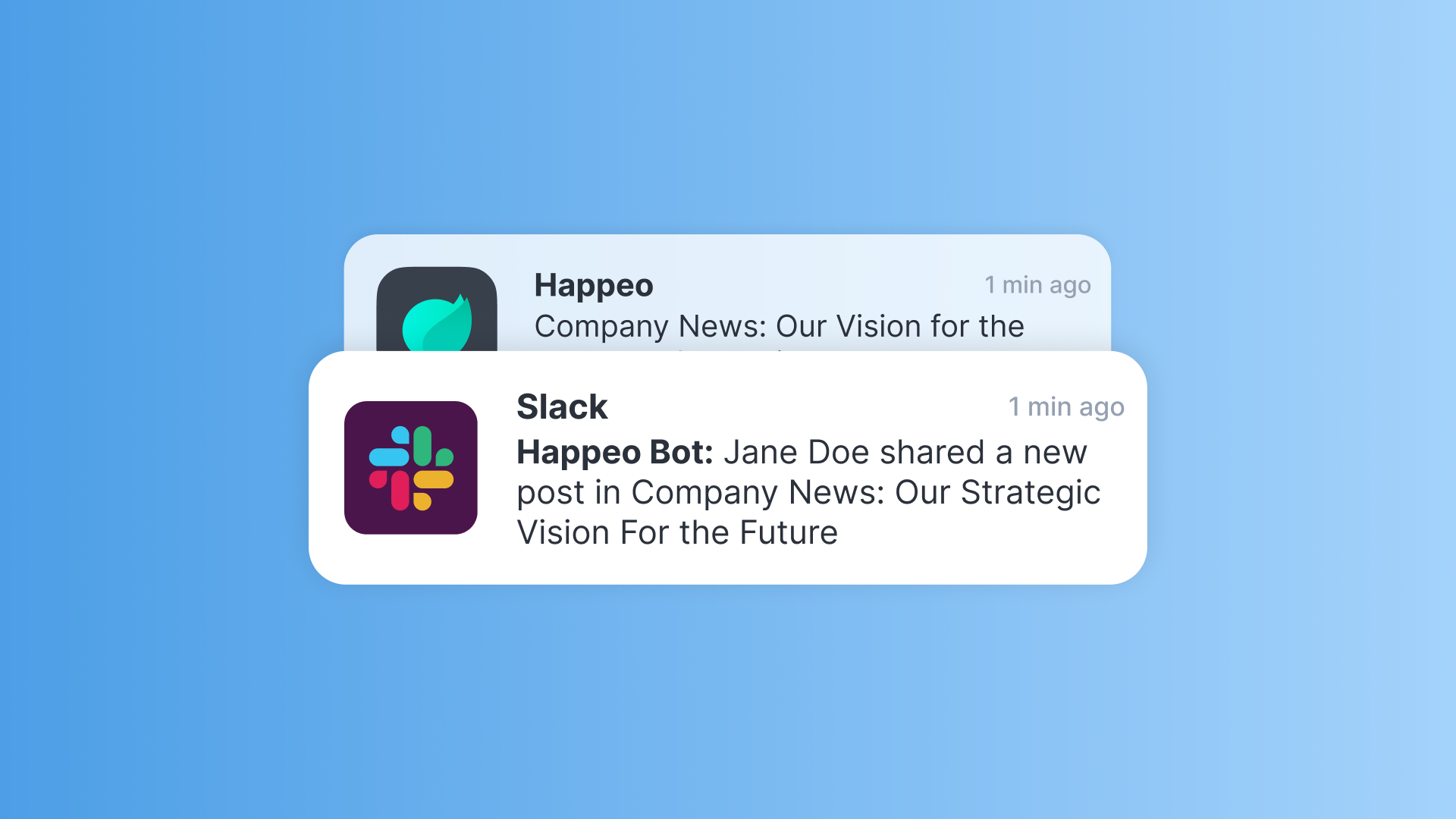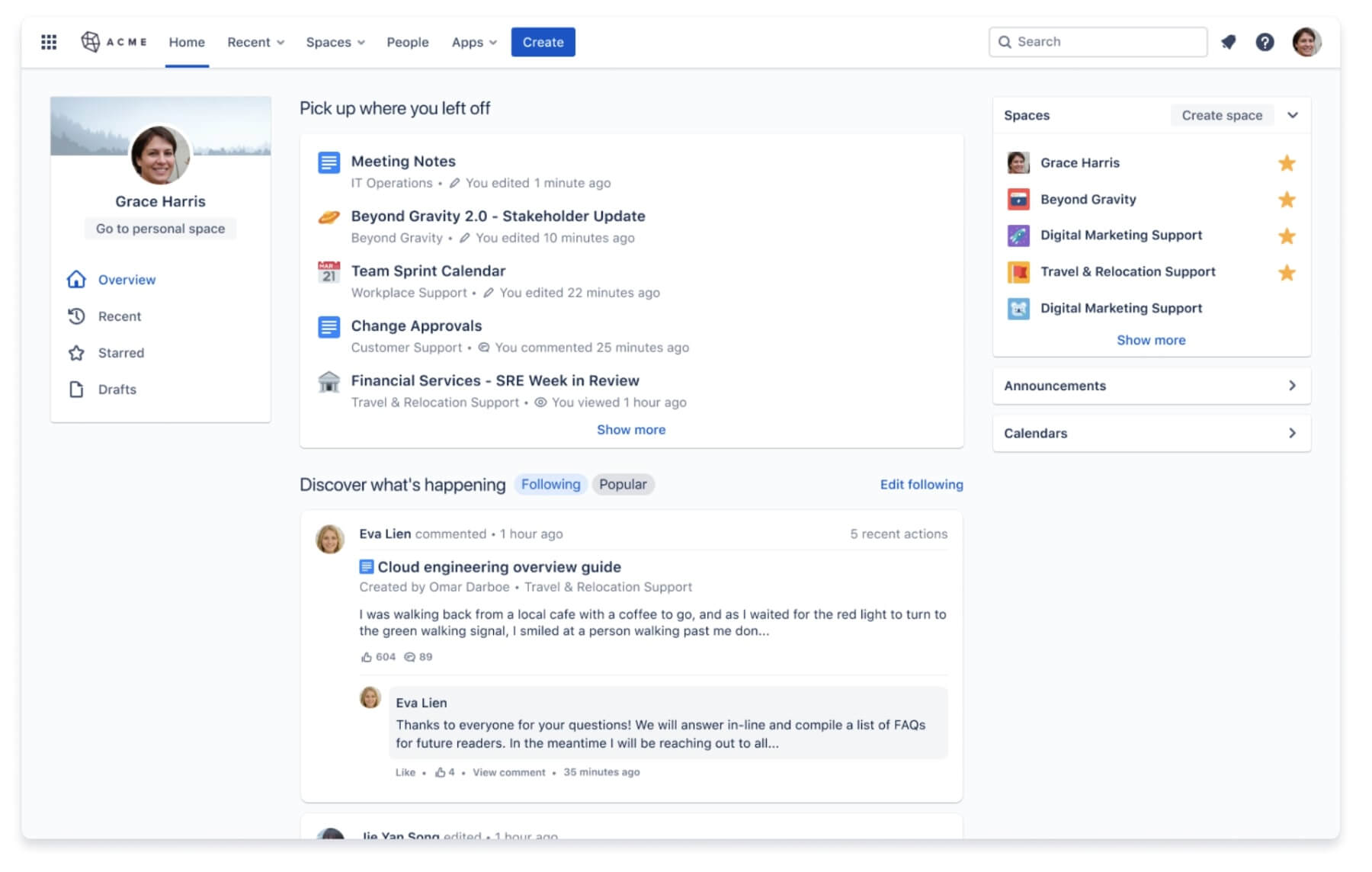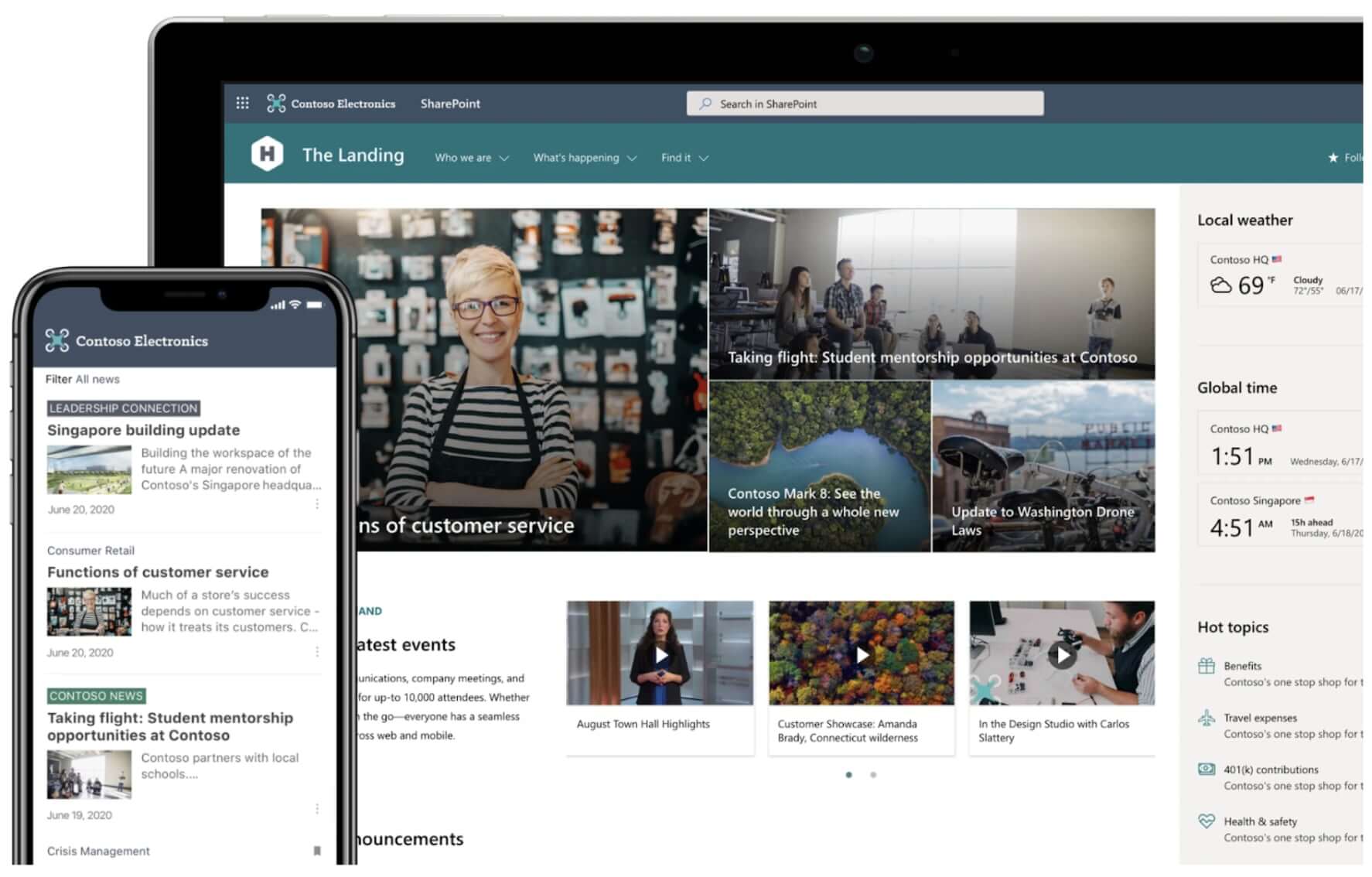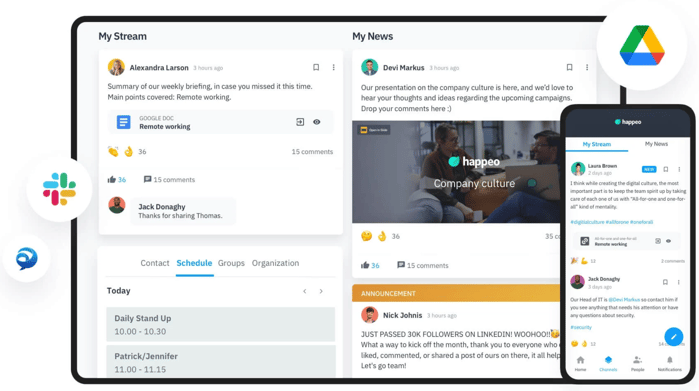
Comparisons Knowledge Management
Confluence vs. SharePoint: Which one is right for your business?

10 mins read
Start building your digital home with Happeo
Request a demoComparisons Knowledge Management
Product
Features
Solutions
Happeo for
Use cases
Resources
Explore
Support
Happeo For
Use cases
Comparisons
Explore
Support
Recent

Jonathan Davies
10 mins read
The global enterprise collaboration market is predicted to grow to $85.8 billion by 2026 — up from $47.2 billion in 2021.
If you’re looking for an enterprise collaboration solution, there are a lot of choices out there. However, you’ve probably come across two of the biggest players in the industry: Confluence and SharePoint.
Both of these are hugely popular tools that are used by thousands of companies across the world to communicate from a distance, collaborate on documents, and develop more efficient and productive workflows.
But which of these two popular options should you choose for your company? Read on for our comparison of SharePoint and Confluence.
Both Microsoft SharePoint and Atlassian’s Confluence have been on the market for a number of years, and enjoy a considerable market share. Microsoft has dominated the world of workplace software for decades. But Atlassian, which was founded in Australia in 2002, is hardly the new kid on the block.
Both platforms are designed to help businesses to productively and effectively collaborate — and their importance has become even more pronounced due to the rise in remote working over the past two years.
Of course, both options have their limitations too. And what works brilliantly for one company won’t necessarily be right for another.
Let’s dive into our side-by-side comparison of Confluence vs. SharePoint.

Use case: Best for small-to-medium businesses and software development teams
Pricing: From $5.50 per user per month, with a free version for teams of 10 people or fewer
G2 rating: 4.1
Confluence was created by Atlassian and launched in 2004. Atlassian’s products, which also include popular collaboration software like Trello and Jira, are reportedly used by some 180,000 people worldwide.
Confluence is a digital team workspace where teams can store and share files and work collaboratively on documents. While the platform is feature-light compared to SharePoint, one of its most important selling points is its user-friendly and intuitive interface.
Confluence features overview
Confluence functions as a shared work environment where users can create “spaces” for each team or department within an organization to collaborate. Within spaces, you can create pages and subpages, either from scratch or using a template. This makes for a neat and logical page hierarchy that makes it easy to find the information you need.
Confluence is a useful tool for collaborative editing of documents, as it allows users to leave file, inline, and page comments (including @mentions) to share feedback in real time. It also partners well with other Atlassian products like Jira, Trello, and the instant messaging platform HipChat.
Confluence pros and cons
Here are some of the main advantages and disadvantages of Confluence as an enterprise collaboration platform.
Pros of Confluence
Cons of Confluence
Why some companies prefer companies over SharePoint

Use case: Best for large enterprises needing a wider range of functionalities
Pricing: From $5 per user per month, or included in Office 365 plans
G2 rating: 4.0
SharePoint is a fully-featured intranet and document management platform that’s been around for over 20 years and has over 200 million monthly active users. It’s a popular solution for large enterprise organizations because its large feature set means it’s customizable to the needs of almost any organization.
SharePoint integrates well with other Microsoft products, and is included in Office 365 business plans, which means it can be a more affordable option for organizations that already use these tools.
Like Confluence, SharePoint is built around internal websites that teams and departments can use to collaborate, which are called “team sites”. However, SharePoint’s customization options for these sites are much more advanced, and you can even use a SharePoint site as an external, public-facing website.
You can also use SharePoint to set up automated workflows and work on files like documents, spreadsheets, and presentations, thanks to its integration with other programs in the Microsoft Office suite. SharePoint uses the same synchronization protocol as Microsoft OneDrive, which means that colleagues can edit documents simultaneously without losing work or creating duplicate versions.
SharePoint pros and cons
Here are some of the advantages and disadvantages reported by SharePoint users.
Pros of SharePoint
Cons of SharePoint
Why some companies prefer SharePoint over Confluence
If you’re trying to decide between Confluence and SharePoint, it’s important to research the key differences and similarities between the two platforms. Then, you can compare these to the exact needs of your organization to figure out which one is the best fit for you.
Customer support: Both SharePoint and Confluence offer online and telephone support to help you if you have an issue with the platform. They also both have libraries of content on how to get the best use out of the software.
However, Confluence also offers a free plan for teams of 10 people or fewer, so this may be the best option if you lead a small team or company. SharePoint, on the other hand, is included in Office 365 business plans, which start at $23 per user per month — so it’s definitely worth checking if you’re already paying for it!
While Confluence and SharePoint are two of the biggest players in the enterprise collaboration market, they’re by no means the only options.
In fact, there are plenty of alternatives to SharePoint and Confluence that are even more intuitive, come with more features — and might even be better suited to your organization.
For example, Happeo is a knowledge management platform, company intranet and collaboration tool that can help you to accomplish many of the same things that Confluence and SharePoint can — and even fills some gaps with features that are lacking from both of them.

Using Happeo, you can:
Integrate with workspaces and popular third-party apps: Happeo offers useful integrations with platforms like Google Workspace and Microsoft 365 (including SharePoint…), to help keep your tools connected and your work processes smooth. And yes, Happeo can integrate with Atlassian tools like Confluence and Jira too.
Whether Confluence, SharePoint, Happeo, or another solution is right for you depends on your organization’s needs.
For example, small to medium-sized businesses can often get all the features they need from Confluence and benefit from its easy-to-navigate interface. On the other hand, larger enterprises might need more functionality, which can be met with a platform like SharePoint.
Or, you might decide to opt for a modern, intuitive solution that also includes social collaboration functions that boost engagement — like Happeo. Remember: our suite of useful integrations means you can easily sit Happeo on top of other collaboration tools like Confluence and SharePoint — so you can get the best of both worlds.
Whichever tool you choose, take the time to carefully consider the functionality you actually need, the work you’re willing to put in, and how your final choice will truly help the most important people in your organization: your employees.
Want to see if Happeo is the best solution for your business? Book a personalized demo today.
